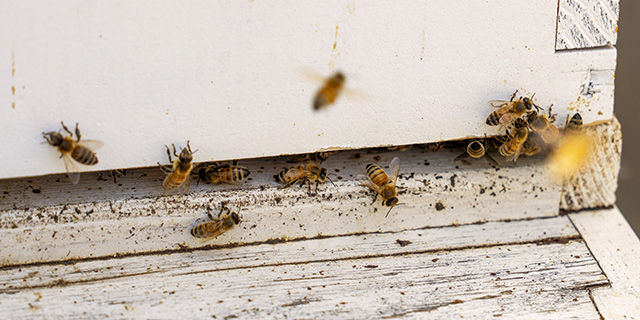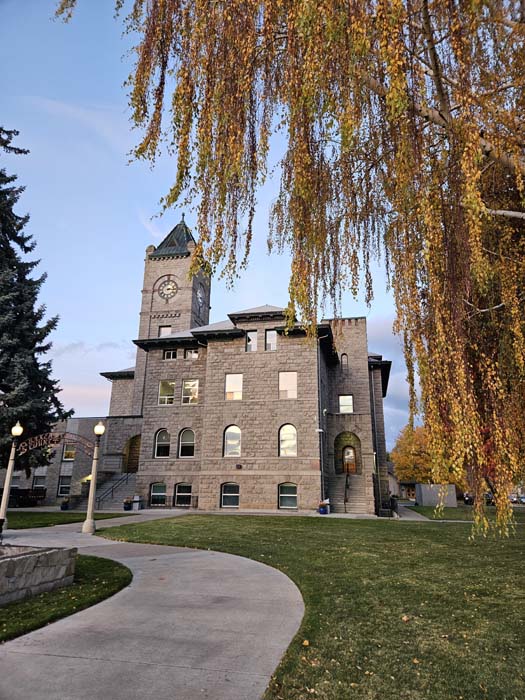The natural world: The salmon cycle
Published 3:00 am Saturday, September 3, 2022

- Dauble
The narrow wilderness trail leading up the North Fork of the Umatilla River is overgrown with snowberry, ocean spray and spreading blackberry vines. I hike past the last footprint in the dust and scramble down a brush-lined slope to the sound of moving water. Today is the last Saturday in July. A week of cloudless skies has produced bright stars at night and triple-digit heat during the day.
Flood debris and overhanging alder crowd the narrow river corridor. A monarch butterfly flaps past; wings beat in slow motion. Cool water swirls around my ankles while small trout attack a No. 10 Stimulator too large for them to swallow. Moving upriver now, a dozen well-placed casts come up empty in a deep, shaded pool where current pushes against a moss-covered rock wall. Lack of eager rainbow trout suggests an adult spring chinook salmon lurks somewhere in the shadows.
A pair of dipper birds leads me upstream on a stream bottom not so slick a wading stick is required. Two log jam pools also yield no action. Then, as if to admit culpability for the absence of keeper-size trout, a springer spooks from the safety of a submerged root wad.
The heralded arrival of spring-run chinook salmon to the Columbia River begins in early April when adult passage exceeds 100 fish per day at Bonneville Dam. These prized fish migrate upriver in increasing number over the next few months. Tributary streams are where they complete their life cycle.
Springers were extirpated from several Blue Mountain streams over a century ago due to overharvest, dams and ill-informed water withdrawal practices. The Confederated Tribes of the Umatilla Indian Reservation re-introduced springers to the Umatilla and Walla Walla rivers in 1988 and 2004, respectively. Elsewhere in the Columbia Basin, supplementation activities by tribal and state fisheries management agencies have bolstered runs.
Rainbow trout — not salmon — is on my mind a week later when I hike up the South Fork Walla Walla River with two flycaster friends. The trailhead parking area is empty except for one other vehicle. We grab our lunch, water bottles and handheld radios. The parachute-like seeds of western salsify drift on an up-canyon breeze.
A first clue that springers are spawning is when Ted’s voice comes up on the squawk box, “Just saw a 2-foot-long fish, but couldn’t get it to bite my fly.” The next clue is clean patches of humped-up gravel found where current picks up speed as it transitions from pool to riffle. Newly constructed redds ranged from the size of a washtub to a full-size bed mattress.
Farther up the trail, a cheerful bearded man with a sleepy infant peering from his backpack tells of seeing “two big salmon in a pool where the trail runs beside the river.“
More salmon are found resting in knee-deep runs next to the bank. Some are rendered visible with worn fins and patchy scars that came with chance encounters along the way. Colored tape knotted to branches of streamside alder indicate ongoing spawning surveys.
A day spent leapfrogging springers, angler companions, and unproductive stretches of river scoured shallow by floodwater puts me farther up the trail than planned, which leads to a long, hot hike back to the trailhead. I recalled another late summer trek to the headwaters of Lookingglass Creek that also led to finding few trout where springers held court. Some angling mishaps are pushed out of your mind only to be recollected later.
Based on today’s results, a return trip to home waters in mid-September seems a better idea. After these meddlesome salmon have spawned and died, cottonwood leaves begin to turn gold, and trout settle down for their autumn feed.
The spent carcass of a salmon lies pinned beside a boulder in the shallows. Its decomposed flesh will soon be nibbled on by crayfish and small trout. Where bears and other wildlife feed on dead salmon, leftovers are broken down by beetles and blowflies. These insects are in turn eaten by songbirds. Ocean-derived nutrients from dead spawners are incorporated into the bottom sediment of streams and later released to the water column to fuel algae that aquatic insects, such as mayflies and caddisflies, graze on.
This Reader’s Digest version of a complex food web demonstrates how returning salmon contribute to energy flow in both aquatic and terrestrial environments.
The spawn of these iconic fish will remain safe in their gravel nest and emerge as newly hatched fry next spring to take their chances with what Mother Nature has to offer. Until the next run of adult salmon returns to briefly rule over stream trout again, anglers will only have themselves to blame for an empty creel.





